Explore The Three 800-Year-Old Bridges Of Wycoller, One Of The Most Haunted Villages In England
Wycoller is a small village in East Lancashire. It is famous for its peaceful countryside and connection to the Brontë sisters.
Wycoller Beck, flowing through the village, is crossed by seven charming bridges, however, three ancient bridges: Clam Bridge, Clapper Bridge, and Pack-Horse Bridge are the most famous.
Clam Bridge
Clam Bridge is the oldest and simplest of the three bridges.
It is made from a single large stone slab that spans Wycoller Beck.
This simple slap bridge could be more than a thousand years old, possibly dating back to the Iron Age.
It is listed as an Ancient Monument.
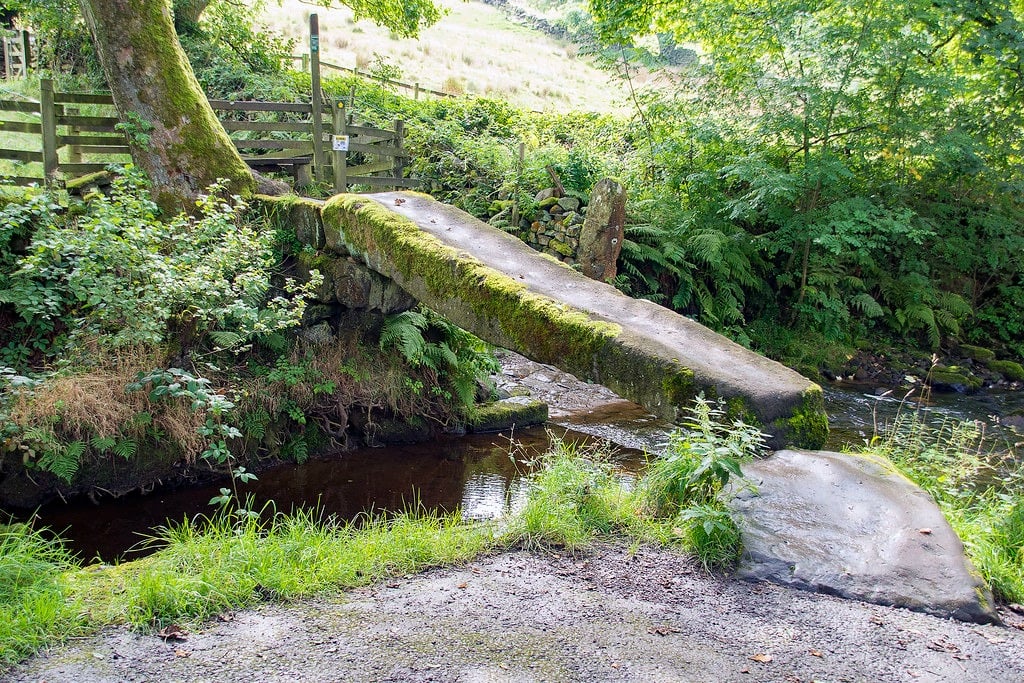
Originally, it might have had a wooden handrail, traces of which can still be seen today.
Though it appears fragile, Clam Bridge has survived many floods and continues to stand strong.

Clapper Bridge
Close to Clam Bridge is Clapper Bridge, also known as the Weavers’ Bridge or Hall Bridge.
This bridge is made from flat stone slabs on sturdy stone piers.
Its exact age is uncertain, but it is believed to date back to medieval times.
Some people think the bridge might be even older than the Norman Conquest.

The bridge is closely tied to Wycoller’s history as a weaving village.
The stone slabs are deeply grooved from the constant wear of weavers’ clogs over many years.

Tragically, these grooves were once chiselled flat after a farmer’s daughter fell and was fatally injured on the bridge.
Although it has been rebuilt several times due to flood damage, Clapper Bridge still stands today.
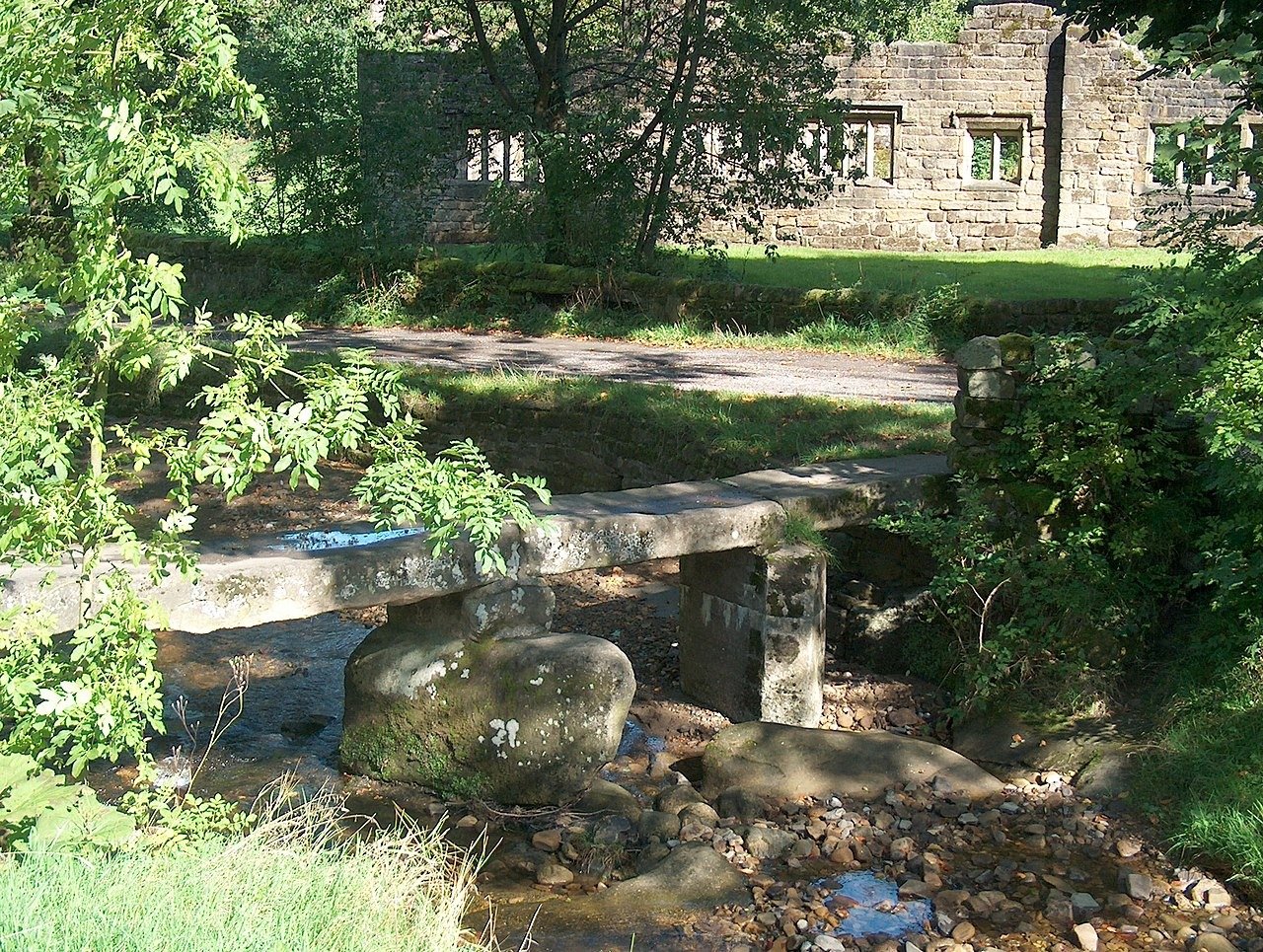
Pack-Horse Bridge
The most famous of Wycoller’s bridges is Pack-Horse Bridge, also called Sally’s Bridge, after Sally Owen, the mother of Wycoller’s last squire.
This lovely, twin-arched bridge spans Wycoller Beck and has a unique, uneven appearance.
Historians believe it dates back to the 13th or 15th century.
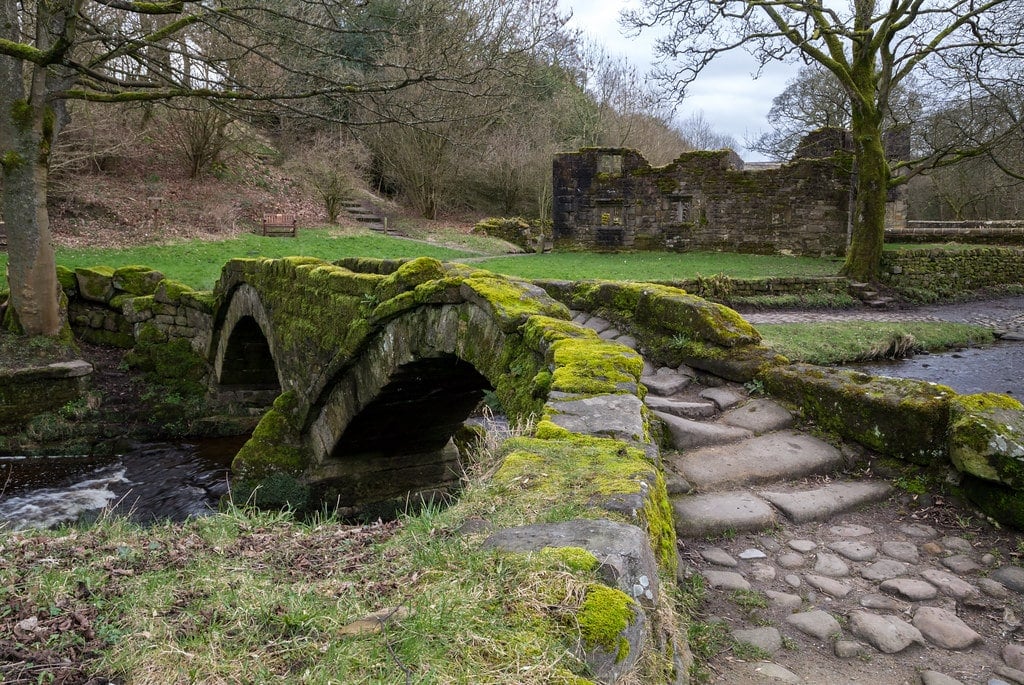
The stones used in the bridge’s construction may have been taken from ancient sites, as some have faint prehistoric markings.
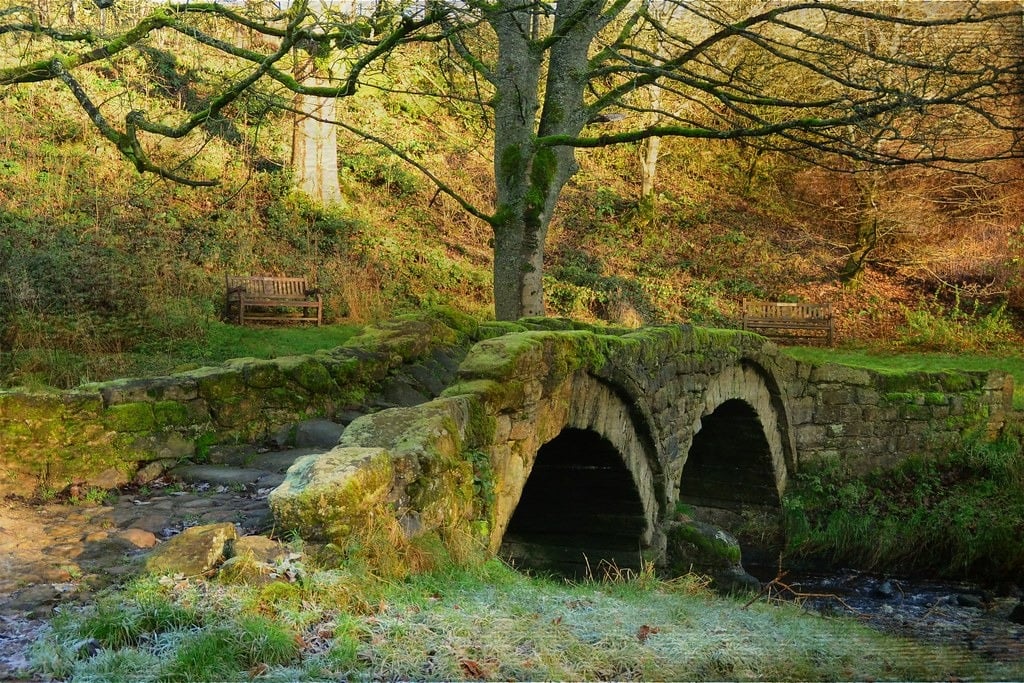
Pack-Horse Bridge is not only a historical structure but also a picturesque landmark.
It even appeared in the film ‘The Railway Children’.

Wycoller
Wycoller is a village in the civil parish of Trawden Forest in in Pendle, Lancashire, England.
It’s about 3 miles (4.8 km) east of Colne, close to the borders of Lancashire, West Yorkshire, and North Yorkshire.
The name “Wycoller” comes from Old English words meaning “dairy farm by the alders.”
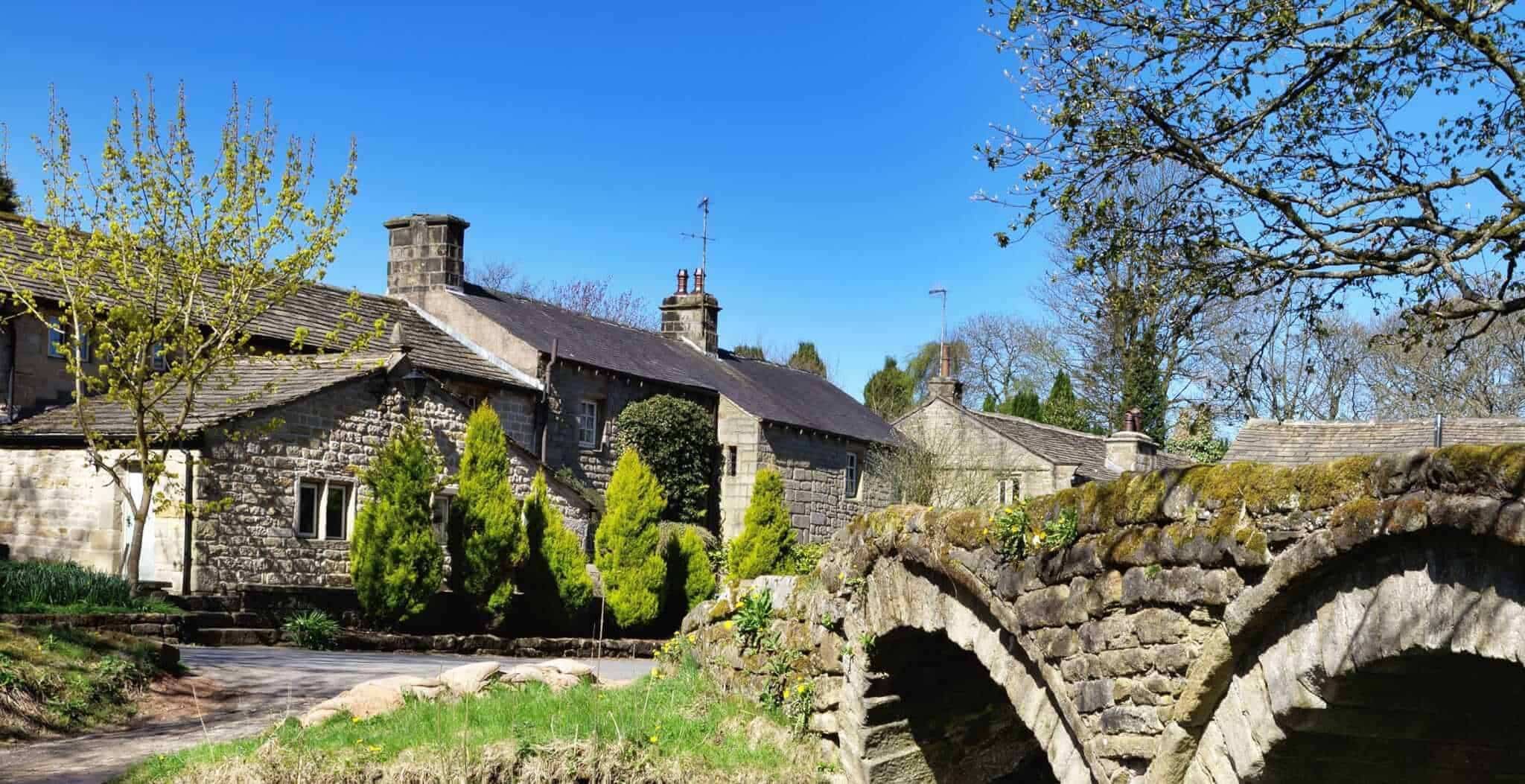
The village has a long history, possibly dating back to the 10th century BC.
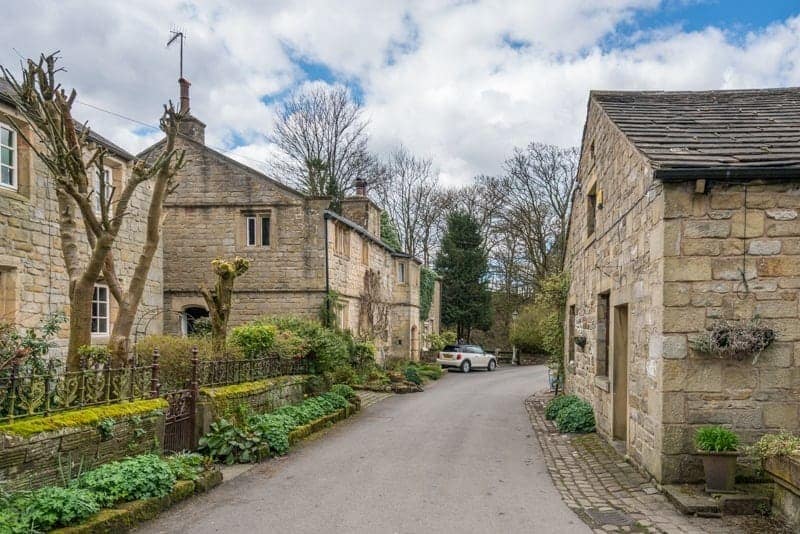
Wycoller Hall and The Brontë Family
At the heart of Wycoller are the ruins of Wycoller Hall, a 16th-century manor house.
The building is believed to have inspired Ferndean Manor in Charlotte Brontë’s novel, ‘Jane Eyre’.
Wycoller Hall was originally owned by the Hartley family. The hall was built in 1550 by Squire Cunliffe.
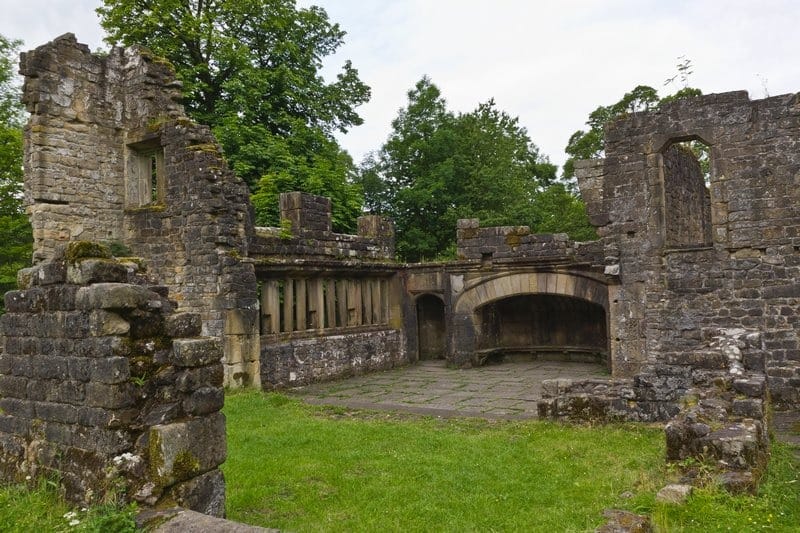
It was then expanded in the late 18th century by its last owner, Squire Cunliffe.
Following his death in 1818, the hall’s stones were reused to built a cotton mill to help repay debts owed by Henry Owen-Cunliffe, leading to its eventual ruin.
Like the bridges, the ruins of Wycoller Hall is both a Grade II listed building and a scheduled monument.
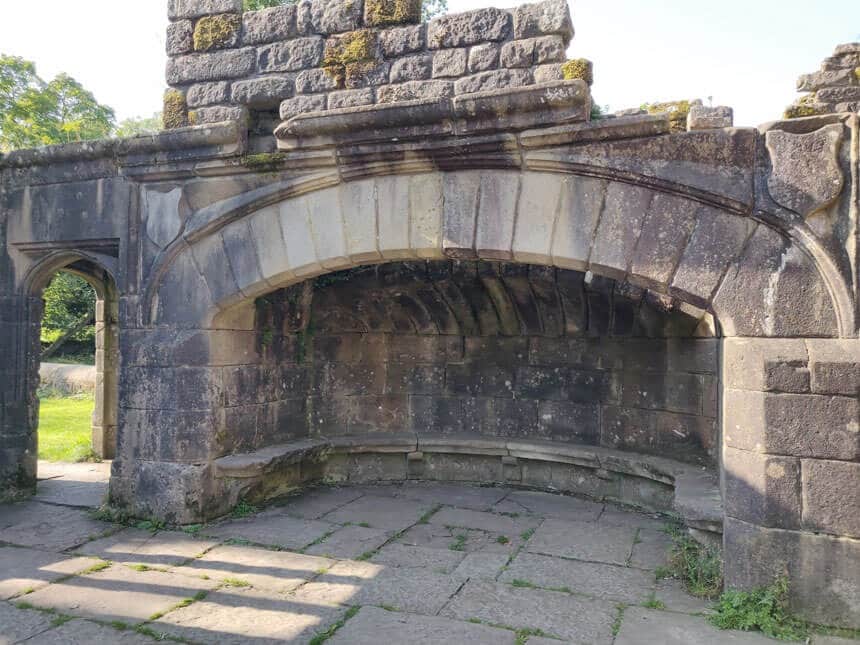
Wycoller Is Now Part Of A Country Park
The Wycoller village is now a country park offerring visitors a chance to stroll through its picturesque village with restored cottages, scenic beck, and the evocative ruins of Wycoller Hall.
It is a protected area and doesn’t allow through traffic, so visitors need to park in one of the car parks: one on Trawden Road or another on the east side of the village near Height Laithe Farm, heading towards Haworth in Yorkshire.

Visitors also can visit the Craft Centre, which has a Victorian tearoom and gift shop.
Ghostly Legends of Wycoller
Wycoller is known as one of England’s most haunted villages.
The ruins of Wycoller Hall are said to be reputedly haunted by several ghosts, one of which is related to a member of the Cunliffe family who murdered his wife in a fit of rage after hearing about her affair. He then fled on horseback.
Each year, people claim to hear the sound of a horse riding through the village, crossing the Pack Horse Bridge, and reaching the Hall.
They also hear blood-curdling screams and the crack of a whip through the night.
Witnesses claim the ghostly horse even breathes fire.
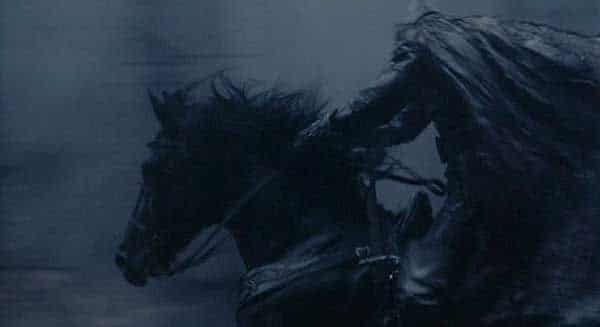
Another ghost in Wycoller Hall is known as ‘Black Bess’.
She is seen in the ruins dressed in black silks before vanishing into thin air.
Some believe she is the murdered wife from the first story, while others think she was a West Indian woman who was thrown overboard by her husband during their voyage home.
Her ghost supposedly followed him to Wycoller.
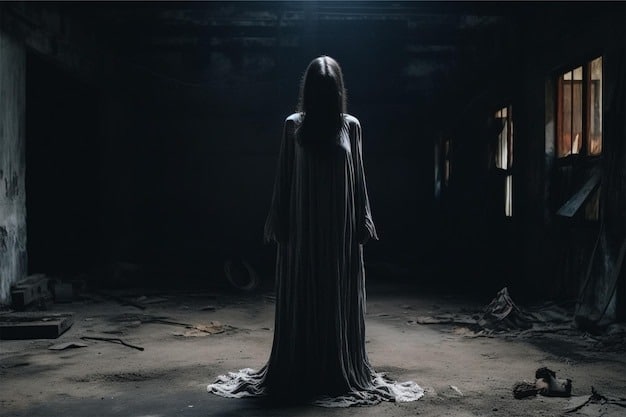
Another ghosts is not human, it’s a terrifying hound, Guytrash Lightfoot.
It is said to haunt the ruins of Wycoller Hall, bringing misfortune to anyone who see it.
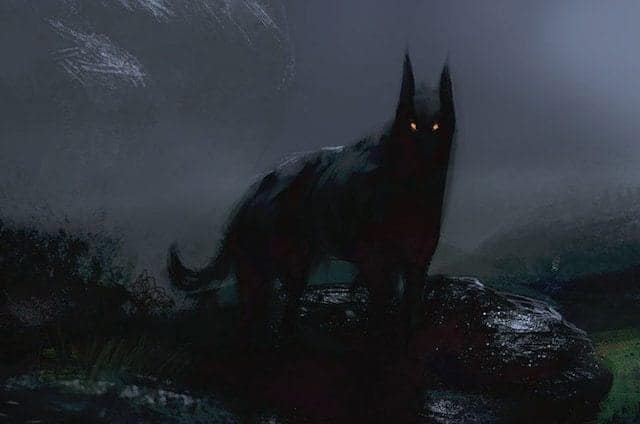
The village also has the ‘Blue Lady’ who haunts Pearson House.
Another house, Wycoller House, is known for having a poltergeist.

